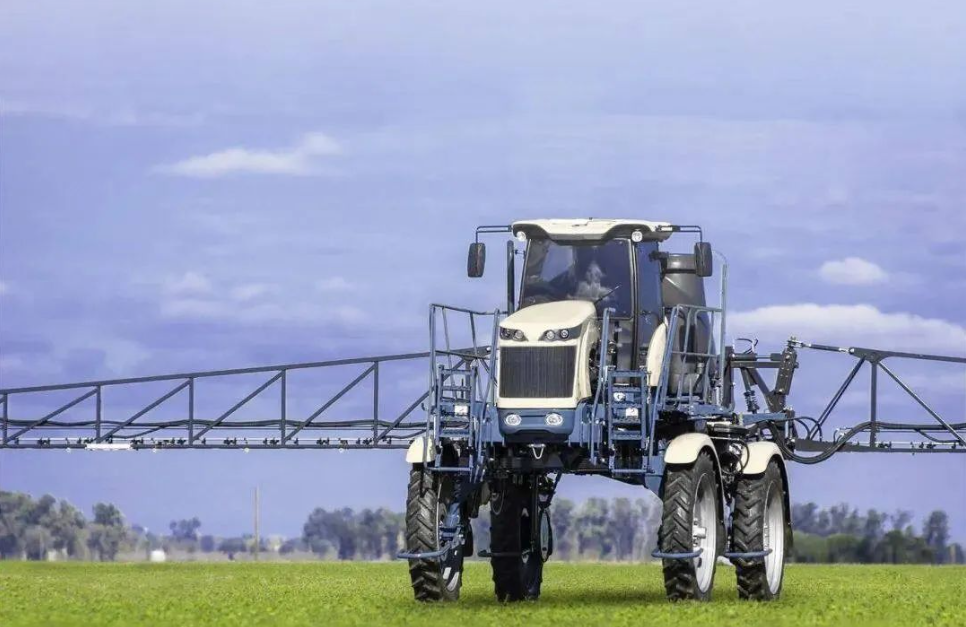What are the applications of composite materials in the field of agricultural machinery?
2025/02/07
Composite materials are widely used in the field of agricultural machinery, and their lightweight, high strength, corrosion resistance and other characteristics provide important support for the performance improvement and cost optimization of agricultural machinery.

The following are the main application directions and specific cases of composite materials in this field: 1. Lightweight design, improve efficiency application parts: tractor shell, harvester cockpit, planter frame, etc.
Advantages: Composites (such as carbon fiber reinforced plastics, glass fiber composites) are lighter than traditional steel, which can significantly reduce mechanical weight, fuel consumption and carbon emissions.
The lightweight design can also improve the mechanical permeability in soft soil, avoid over-compaction of soil, and protect farmland ecology.
Case:
Some of John Deere's harvesters use fiberglass reinforced plastic (GFRP) for the top cover and housing, reducing weight by about 30%.
2. Anti-corrosion and anti-fatigue application scenarios: irrigation equipment, fertilizer applicator, sprayer parts, etc.
Advantages: The corrosion resistance of composite materials (such as polyester resin-based composite materials) to water, pesticides and fertilizers is better than that of metals, extending the service life.
Fatigue resistance suitable for long-term high load operation, reduce maintenance frequency.
Case:
The storage tanks and pipes of agricultural sprayers are made of composite materials to avoid leakage problems caused by chemical corrosion.
3. Complex structure design and function integration application parts: harvester blade, sowing plate, transmission system shield, etc.
Advantages: Composite materials can be molded to create complex shapes, replacing traditional welding or assembly processes and reducing costs.
It can integrate functional structures such as sensors and wire slots to improve the level of intelligence.
Case:
Some seeder guide tubes are made of fiber-reinforced composite materials to achieve the combination of lightweight and wear resistance.
4. Shock absorption and noise reduction application components: cab interior, seat bracket, chassis shock absorption structure, etc.
Advantages: The damping characteristics of composite materials are better than those of metal, which can reduce mechanical vibration and noise and improve operating comfort.
Better protection for sophisticated electronics, such as navigation systems.
5. Environmental and sustainable application trends: recyclable composite materials, bio-based composite materials (such as flax/hemp fiber reinforced plastics).
Advantages: Reduce metal resource consumption and reduce production energy consumption.
Bio-based composite materials can be degraded or recycled, which meets the needs of agricultural green transformation.
Case:
Some European agricultural machinery manufacturers are experimenting with natural fibers (such as sisal and bamboo fibers) instead of glass fibers for non-load-bearing components.
6. Application scenario of special environment adaptability: agricultural machinery equipment in high temperature dry or high humidity areas.
Advantages: Some composite materials are resistant to high temperature (such as ceramic matrix composite materials) or humidity and heat (such as epoxy resin matrix composite materials), and adapt to extreme climates.
The surface can be coated with anti-ultraviolet layer to prevent aging.
Challenges and Limitations Cost issues: High performance composites, such as carbon fiber, have high initial costs that need to be reduced through mass production.
Maintenance difficulty: The repair of damaged composite materials is complicated and requires supporting maintenance technology.
Strength matching: Some load-bearing structures still need to be combined with traditional metal materials.
Intelligent integration: Composite materials are combined with sensors to monitor mechanical conditions (e.g. stress, temperature) in real time.
Mixed-material construction: Metal-composite hybrid design that balances strength, weight and cost.
Promotion of bio-based materials: The use of agricultural waste (such as rice husks, straw) to develop low-cost environmentally friendly composite materials.
Through the innovative application of composite materials, agricultural machinery has been significantly improved in terms of efficiency, durability and environmental protection, and its application scope will be further expanded in the future as technology matures and costs fall.

